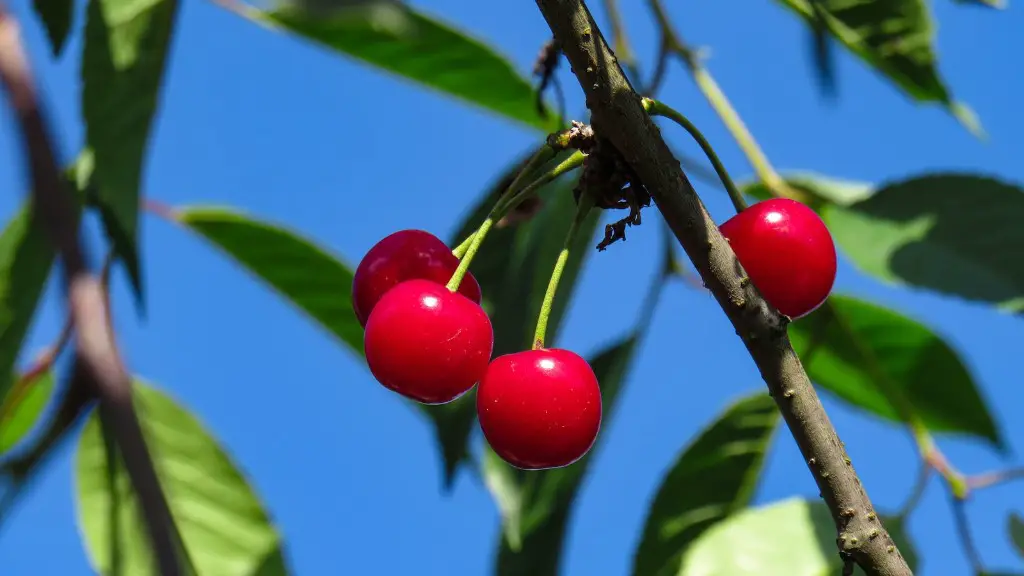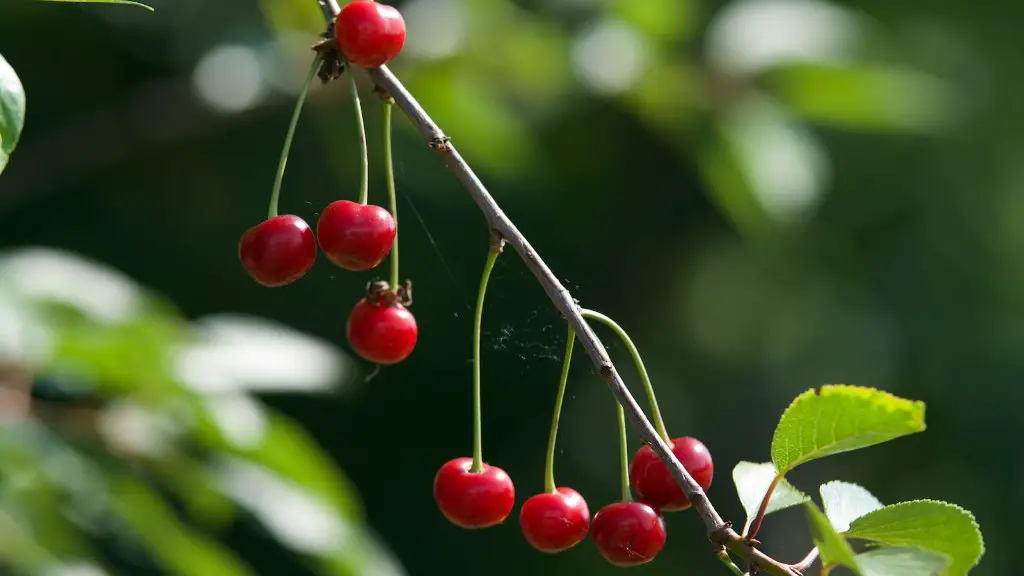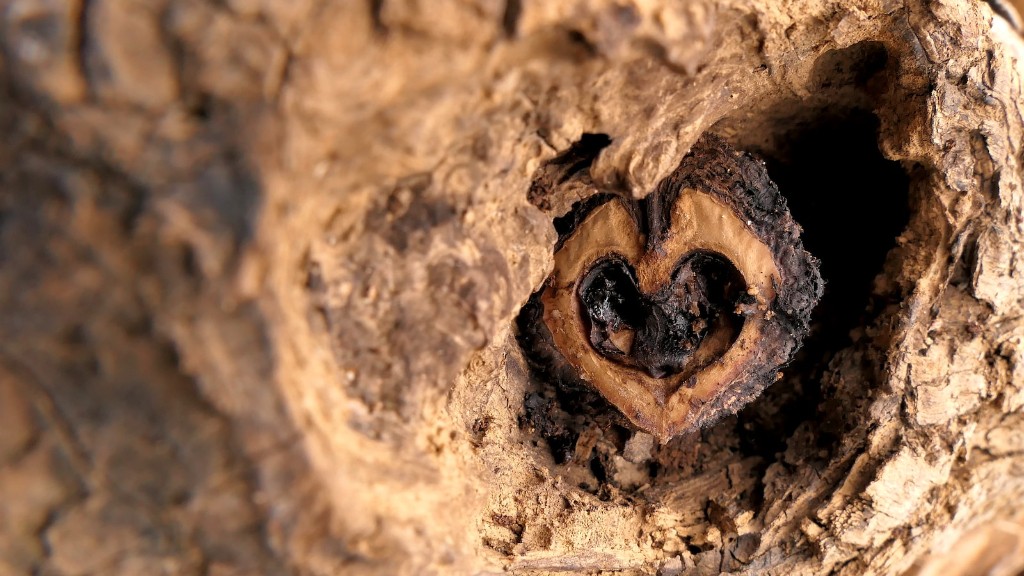Cherry trees are one of the most popular trees to be found in gardens and parks around the world. But it can be a frustrating waiting game, as without the right care many of them don’t bear fruit. The good news is that with a few handy tips and tricks, anyone can learn how to make their cherry tree bear fruit.
The first step to successfully making a cherry tree bear fruit is to provide it with the correct environment. Many people commit a common mistake when planting a cherry tree. It is important to choose a location for your tree which has at least 6-7 hours of direct sunlight per day, as well as plenty of soil moisture. Watering your cherry trees deeply and on a regular basis will ensure that the tree stays in a healthy and fruitful condition. Additionally, room should be given to the tree to allow it to grow. If a cherry tree is too bound in its’ planted environment, it will not be able to reach its full potential and will likely not bear fruit.
Fertilisation is also a key factor in producing fruit-bearing cherry trees. It should come as no surprise that healthy and nutrient-rich soil leads to healthy, thriving trees. On top of this, it is possible to give the soil an extra boost with fertiliser every spring. This in turn will feed the tree and contribute to a healthy harvest in the autumn. In addition to this, it is also important to note that cherry trees are relatively pest-resistant. Thus, if your tree is looking green and healthy it probably won’t need chemical pest deterrents.
When a cherry tree has grown to the relative age necessary for fruit bearing, there are certain pruning techniques which should be employed. It is important to prune both too hard, to encourage a high level of growth, as well as too little, to prevent the tree from becoming too crowded and reduce competition for resources. Furthermore, pruning is not just about the aesthetics of the tree. Pruning also helps to improve air circulation and light penetration through the branches, in addition to increasing the chances of the cherry tree bearing fruit.
Pollination
In order for cherry trees to bear fruit, pollination is an absolute necessity. Cherry trees can require two types of pollination: self-pollination, or cross-pollination. Self-pollination is when the cherries are pollinated by the same tree. This is an easier process than cross-pollination, as it is easy to achieve with fewer trees. However, cross-pollination of two different cherry tree species is the more effective approach, as the pollen from one tree acts as a stimulant for the other. Once the trees have been successfully pollinated, it is time to wait for the cherries to appear.
Harvest and Storage
Once the cherries have fertilised, it is usually only a matter of time before the tree is ready for harvesting. It is important to pick cherries as close to the time of ripening as possible, as it is at this time that they are at their most sweet and juicy. If the fruit has been picked too early, the cherries may not reach their full flavour potential and can give off a disappointing taste. Once picked, the cherries should be stored in the refrigerator without delay to prevent premature ripening.
Pest Control
Cherry trees generally require very little pest control, as they are fairly self-sustaining. However, if a tree does become infested with pests, it is important to take action to prevent further damage. Common culprits of pest infestation in cherry trees include aphids and caterpillars. Removing these pests manually is the best approach, though chemical treatments can be used if necessary. Additionally, keeping a watchful eye on the tree and surrounding areas can help to prevent an infestation from occurring in the first place.
Fungal Diseases
Fungal diseases can attack various parts of cherry trees, such as the leaves, branches and even their fruit. Common examples of fungal diseases include brown rot and powdery mildew. Whilst many cherry tree species are resistant to the majority of fungal diseases, it is important to be aware of the most prominent ones. Regular checks of a cherry tree’s leaves and branches should be done, and if any signs of fungal diseases are detected, then an appropriate treatment should be put into place to prevent spread.
Fruit Quality
Once the tree starts to bear fruit, it is important to inspect the quality of said fruit. Not all cherries will be of the same quality and some may be under-filled, so it is important to pick only the best produce and leave the rest of the cherries to ripen further. Improper picking may cause the cherry tree to become unproductive, with the same low quality fruit being produced in the summer.
Water Stress
Cherry trees require a large amount of water to grow and produce healthy fruit. As such, it is vital to ensure that adequate water is provided, especially during the spring and summer months when the tree is in full growth and fruiting. If a cherry tree frequently goes through periods of water stress, then it is likely to be unproductive. To avoid this, it is important to create an effective watering system and keep an eye on the soil moisture levels in order to ensure that the tree is getting all the water it needs.
Planting Time
When planting a cherry tree, choosing the correct time is of the utmost importance. Cherry trees are best planted during autumn, as this helps the tree to establish healthier root systems, meaning that the tree will have more of a chance to bear quality fruit. Additionally, this will significantly reduce the time it takes a cherry tree to bear fruit, as the tree will already have a strong root structure in place, giving it access to the necessary nutrients.
Conclusion
Whilst cherry trees may not be the simplest fruit-producing trees to look after, with the right tips and strategies in place anyone can learn how to make their cherry tree bear fruit in a timely and efficient manner. From correctly planting the tree in the right environment to using the right fertilisers and taking appropriate measures against pests and diseases, making a cherry tree produce fruit can ultimately be rewarding and satisfying.



